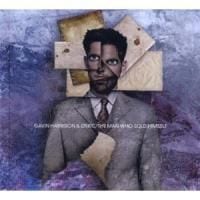
As an avowed prog fan, I am more than aware of the notion of the supergroup. Once a prog musician attains a certain status, it seems only natural for him to voyage off into different musical outlets to fill the niches his main group can’t fill. A list of all the projects any of the members of Dream Theater or Porcupine Tree are involved in is bound to take up several pages or flow charts. In fact, this has been done before: Porcupine Tree’s frontman Steven Wilson himself participates in so many projects that a complete discography of his work totals over three hundred pages. Given the high levels of talent most prog musicians possess, it’s no surprise there are as many supergroups as there are now. A drummer like Gavin Harrison, whose rhythmic skill is well known amongst fans of prog rock, has many different ways of expressing his music.
Like many, I imagine, I discovered Harrison’s work through my love of Porcupine Tree. Upon seeing his brilliant ”Cymbal Song” on the bonus features of Porcupine Tree’s 2005 live DVD Arriving Somewhere…, I knew there was something truly unique about his approach to drumming. One thing the history of prog can attest to is the musical ability of the drummer; he or she is not merely there to provide rhythm, as the drums are not merely rhythmic. Prog’s greatest drummers, from Nick Mason to Neal Peart to Mike Portnoy, have all in one way or another elevated the drums from merely being the instrument at the back of the stage that keeps the beat going. There’s a reason why the drum solo is a mainstay at rock concerts, especially prog ones.
Knowing Garrison’s prowess, I was intrigued upon discovering his collaborative work with multi-instrumentalist Ø5Ric, who sings and plays the extended-range bass guitar here. Together they craft an incredibly complex, music theory-bending brand of prog that’s bound to appease the tastes of those craving technically challenging music. Whether it’s Gavin’s chopped-up beats on “Identitas” or Ø5Ric’s bass runs on the title track, it’s evident throughout The Man Who Sold Himself that this is the work of two beyond proficient musicians. The majority of the experiments here are fairly short (at least by prog standards) and to the point; each track finds a new way to bend polyrhythms to the point that they almost don’t sound on beat, though, with the quality of the musicians involved, everything always sounds right in place. And while all of this is generally what fans of prog rock are looking for, that alone does not a listenable record make. There also have to be hooks, catchy riffs, and melodies to make the music sound like something more than just a really awesome jam session.
Here is where the central problem with this experiment lies.
Though anyone with an ear for the technically uncompromising will find much to admire here, the music doesn’t go much further beyond being incredibly intricate. One criticism of prog I’ve heard from friends who don’t share my love of the genre is that it generally sacrifices listenability for being flashy; while most of the time this criticism is outright false, The Man Who Sold Himself definitely buys right into it. While musical projects, especially ones comprised of skilled musicians, are by their nature self-indulgent, one can definitely toe that line too far, and in large part that’s what’s happening here. This is a very cerebral listen, but, by that very token, it doesn’t make it a ton of fun to listen to; you come back not because the music is ear-grabbing or entertaining, but because you want to figure out how all of the rhythms can possibly make sense.
And then there’s the matter of Ø5Ric’s vocals. With many prog groups, the vocalist tends to be the divisive figure. Dream Theater’s James Labrie has a voice either called divine or over-the top. (For me, he’s somewhere in between the two). The prog metal/electronica supergroup OSI – which also features Harrison on the drums – is led by Kevin Moore on vocals, who is generally criticized as being too bland and dull as a singer. Personally, I think Moore fits OSI’s moody atmospherics well, but I can definitely see why people would be put off. With this collaboration, however, I find Ø5Ric to be a distracting presence vocally. On tracks like “Prize” and “Own,” it’s almost hard for me to get to the conclusion of the song; in the former case, he stretches to reach certain notes, and in the latter the repetition of “Old Man” is grating to the point that I miss the music underneath. The album’s lyrical narrative, a criticism of the global financial scheme, is for the most part tangential here. The real meat of The Man Who Sold Himself is the technicality of the music, not the vocals or the lyrics.
In this way, the album finds itself in a dilemma. The music, while on an intellectual and abstract level is highly engaging, doesn’t appeal on many other levels. Lyrically and vocally, the record makes you wish that they would have focused more on the instrumental aspect, despite the shortcomings there. For this reason, The Man Who Sold Himself is likely to appeal only to those diehard fans of Harrison or Ø5Ric, or those drawn to mathematical, abstract prog. Still, this album gives plenty of reasons to be continually impressed by the chops of these two musicians, even if it isn’t the most enthralling of listens.
A brief, though important note: Aside from the music, The Man Who Sold Himself is a testament to the K-Scope label’s continued excellence in high-quality packaging. This album was released as a two-disc digibook with high-quality photography throughout. A surround-sound mix is also included, which is unquestioningly the best way to listen to the music here, as it draws out the nuances of the beats and rhythms.

![Call for Papers: All Things Reconsidered [MUSIC] May-August 2024](https://www.popmatters.com/wp-content/uploads/2024/04/all-things-reconsidered-call-music-may-2024-720x380.jpg)



